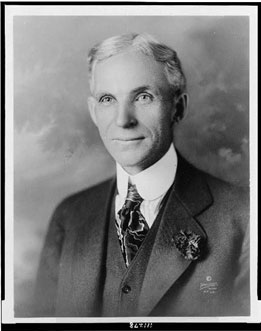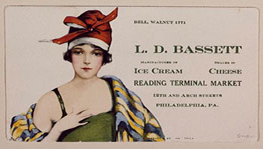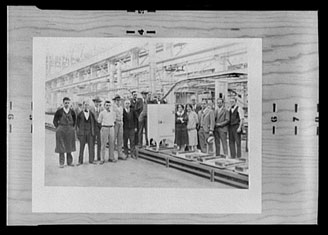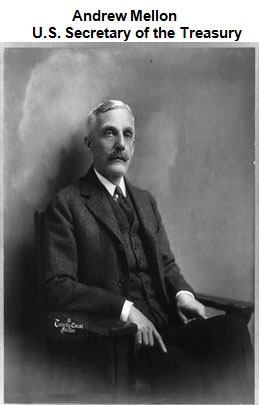When the United States entered the 1920s, Americans were recovering from the economic tension of World War I. Americans had saved and rationed during the war and now they had money to spend. The economy changed from a wartime economy to one that was rooted in consumerism. More people lived in urban areas rather than rural areas for the first time in America. According to the Social Security Administration, in 1920 there were 54 million people who lived in urban areas, and 51 million who lived rural areas.
The wealth of the nation doubled during this time. The increase in the production of consumer goods led to the need for more workers who benefited from the higher wages that were offered. As a result, consumer spending increased, which benefited businesses. Thus, an economy based upon the consumer emerged.
There were many new products that were introduced to the American market. Technological advances allowed producers to create products with new technology, such as electricity. Appliances such as refrigerators, vacuum cleaners, and dishwashers were produced in a market that targeted women who typically did housework during this time. These appliances proved to be timesaving, freeing women up for other activities outside the home.
![]() Click the link below to see more inventions of the 1920s and then answer the question that follows in your notes.
Click the link below to see more inventions of the 1920s and then answer the question that follows in your notes.
Reflection: What did the multitude of the inventions of the 1920s indicate about technology during the Roaring Twenties?


Source: Henry Ford, head-and-shoulders portrait, facing slightly left, Library of Congress
Technological advances made mass-production the standard practice in producing consumer goods. Henry Ford and his assembly line production of the Model T Ford not only made it cheaper to travel, but revolutionized the way other companies mass-produced consumer goods. Goods such as canned foods, clothing, and cosmetics are just a few examples of the types of consumer goods that were impacted by Henry Ford’s innovation.
Click on the following link to watch a video about Henry Ford and the Model T and then answer the questions that follow in your notes.
Interactive popup. Assistance may be required.
Henry Ford changed the way that assembly lines worked by placing people in stationery locations and assigning them with one task instead of having people following the line and completing various tasks.
Interactive popup. Assistance may be required.
The initial cost of the Model T was $1000. It then dropped to $800. After 100,000 were manufactured, the cost dropped again to just over $350.
Interactive popup. Assistance may be required.
Since the Model T became cheaper for consumers to purchase, there were more automobiles on the road. People had more freedom to travel for pleasure instead of depending on the railroad system.

Source: 1920s-vintage advertising flier for the Bassett's Ice Cream stand in the Reading Terminal Market, Philadelphia, Pennsylvania
The increase in the production of new consumer goods led to new businesses and services. Advertising became a booming business in the 1920s. Although the business of advertising was not new, the practice of creating demand for new products was. Advertising was done in a variety of ways. Companies advertised on billboards, in magazines, and through a new invention, the radio.
The advertising business created a demand for new products to be developed that consumers were eager to buy. The method of payment also changed during the 1920s. The idea of credit, or “buy now, pay later” became the mantra of the middle class.

Source: First electric refrigerator produced in a large eastern plant is shown as it rolled from the assembly line on October 15, 1928, Library of Congress
The idea of credit was appealing not only to consumers, but to department stores that promoted the idea as well. By offering the opportunity to pay for items with installment plans, department stores saw a boost in sales.
Automobiles were also offered on credit. By 1929, more than half of all automobiles were purchased on credit. As a result of the increase in credit, consumer debt more than doubled during the 1920s.
The economy of the 1920s was further impacted by the tax cuts implemented in 1921. President Warren Harding appointed Andrew Mellon as Secretary of the Treasury Department.

Source: Andrew William Mellon, 1855-1937, Library of Congress
As the nation embarked on the most materialistic period in its history, Mellon's philosophy was one of debt reduction, tax reduction, and a balanced budget.
His tax reform scheme, known as the Mellon Plan, reduced taxes for business. His theory was that big business would prosper in proportion to the lightening of its tax load and its profit would be transferred to the rest of the nation.
During much of his tenure, general prosperity and times of peace enabled Mellon to implement his measures.
-Excerpt from Treasury.Gov
Many have referred to Mellon’s economic theory as the “Trickle Down Theory.” Mellon believed in keeping taxes low for the wealthy and business owners. His theory was that taxes would trickle down from the rich to the general population.
His theory would prove to play a role in the stock market crash in 1929, and lead to the decline of the American economy in the 1930s.
During the 1920s, the gross national product (GNP) was well over 105 billion dollars. Seeing the trend of increased sales in businesses and the chance to make a small fortune, people from all economic backgrounds began to invest in the stock market; some even borrowed funds to invest.
Stockbrokers allowed people to buy stocks on margin, which is the practice of investors purchasing stock with borrowed money. Investors expected to cash in enormously because the prices of shares were escalating.